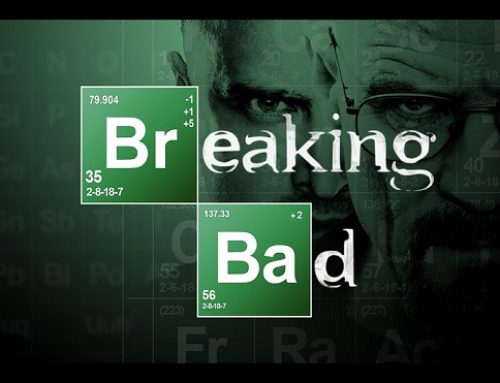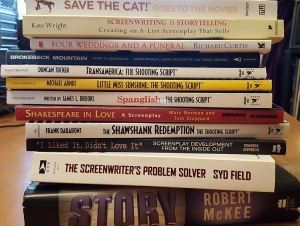by Renée Lukas
 Don’t get me wrong. Patty Jenkins has blasted a huge hole in the glass ceiling for directors who happen to be women. Gal Gadot is a gift from the casting gods. And Kristen Wiig as Cheetah? Priceless.
Don’t get me wrong. Patty Jenkins has blasted a huge hole in the glass ceiling for directors who happen to be women. Gal Gadot is a gift from the casting gods. And Kristen Wiig as Cheetah? Priceless.
But like most cases of films going off the rails, it all starts with the script.
(WARNING: Spoilers ahead. There’s no turning back after this point.)
One simple change could have fixed Wonder Woman 1984.
Since I don’t know what discussions went on behind the scenes, I can only offer this fix:
Lose the Max Lord character. Period.
Now hear me out, you DC purists. This film took liberties and changed several things from the DC comic books anyway. Dr. Barbara Minerva went from being a British anthropologist to an American geologist, gemologist and more. So, in the spirit of taking liberties to make this script work, just hear me out.
Cheetah needed to be at the forefront of this story—or save her for another movie. Cheetah needed to be the villain she was supposed to be, to face off with Diana, which is the usual dynamic of films in this genre.
It would have been an easy fix.
Since Dr. Barbara Minerva (a.k.a. Cheetah) is an expert gemologist, she could have pretended that the Dreamstone was “lame,” not worth anything, etc., all the while knowing what its powers were. It would then be plausible for her to make a wish on the stone to be more powerful like Diana. As it’s currently written, we’re to believe this expert gemologist knows nothing about this famous, ancient stone.
The second act could have escalated from there, as Cheetah gains more power, the world on the brink, then a dramatic climax. By doing so, it would have been a tighter, more focused script.
Instead, Max Lord was an unnecessary distraction who took up so much screen time, the main hero-villain dynamic was diluted by his presence.
What Worked in Wonder Woman 1984
The most compelling aspect of the story was Diana’s impossible decision between two equally bad choices—sacrifice Steve or lose her power. Those are the kinds of choices that can really get an audience invested and anxious, just as you want them to be. However, Steve’s miraculous return seemed to merit a bit more attention than we saw. And why did he have to occupy another man’s body, which brings up a whole bunch of other icky issues??
The opening sequence on Themyscira was nothing short of brilliant. While visually stunning, it also set up the theme perfectly. The idea of taking a shortcut, accepting a lie over the truth, was woven throughout several plot lines that followed, and, most tragically, Diana’s own “wish” to have someone back who was truly lost to her.
Seeing Diana in a more contemporary time, stopping crime in a shopping mall (the church of the ’80s), was fun. Seeing her life at the Smithsonian was an interesting set-up. But the second and third act became problematic for reasons stated earlier. I hate to say it, but a good film should leave you wanting more, not wishing it would be over. Much like the final battle in the first Wonder Woman film, the climax dragged endlessly and needed to be significantly cut down. I’ve since read that Patty Jenkins was not happy with the first film’s ending, either.
Finally, Lynda Carter’s cameo brought a smile to those of us who knew her as the original Wonder Woman from TV. It’s too bad it came during the closing credits!
Why does everyone go to extremes in their reviews of this film?
My best guess is that it’s like the film, Happiest Season, a groundbreaking holiday rom-com that features lesbians. Whenever you have minorities represented, or, dare I say—a major superhero blockbuster headed by a female character—you may be more emotionally invested than usual, resulting in scrutiny that’s sometimes unfair. There was a lot of anticipation for this film. You were rooting for the female director, who didn’t disappoint. You were rooting for the title character. You wanted it to be as good as the first film.
A Feminist Perspective of Wonder Woman 1984
I can only speculate, but I wonder if gender politics didn’t play a role in the story. Did the studio question whether two female characters facing off would be enough without throwing a male villain into the mix? If you took out Max Lord, that would have left only one significant male character, Steve Trevor, who (gasp) would have been the “love interest.” Oh my! Imagine turning the tables in such a way. In the first film, Steve has a major impact on the plot. But in this film?
Some things are so commonplace to us, we don’t even bat an eye. That’s why it helps to flip the situation–then you can more easily see it. Consider how many films you’ve seen where the only purpose a single woman has on screen in an all-male cast is to be the love interest? Action movies, gangster movies, male buddy comedies. . . If we were to take a historically male-dominated genre like the superhero blockbuster, populate it with hero and villain women, and the only man on screen serves as the love interest to the female hero, could studios stomach it? I truly believe some people in the industry want to make change happen. I also believe it’s hard for some to rip off the Band-aid and choose to be bold, rather than to fall back on old habits.
Whatever the reason for his major role in this movie, Max Lord muddied and confused the plot, and I wish Cheetah had gotten the screen time she deserved.
This blog usually focuses on the script, or the story, of a film. But I’d be remiss if I didn’t mention a few other things. Yes, I’m a feminist. Proud of it. Have no problem using the ‘F’ word, either. Like many feminists, the world often looks upside-down to me. So here are just a couple of upside-down impressions I had of this film. . .
Wonder Woman’s Costume is Ridiculous
There. I said it. The short skirt and bare legs seem the perfect outerwear for fierce battles where your skin is sure to be scraped or worse. Also, we’re to believe the powerful warriors on Themyscira run around in short skirts with ridiculously high heels in battle? Robin Wright’s wedge heel? Puh-leeze! Come on—even Superman and Spiderman wear pants.
Kicking a Rapist is. . .Cruel? Really?
Like others who have reviewed this film, I also take issue with turning Barbara, who rightfully kicks the crap out of a rapist, into a villain. This shouldn’t have been a demonstration of her losing her humanity. If anything, many women probably cheered at that part. There were plenty of other ways to show Barbara losing her humanity—like kicking the homeless guy she used to be kind to, anything. But aw, giving a rapist what he deserves? That was cringe-worthy as an example of her “change.” If Cheetah was destined to become a villain, let Wonder Woman kick the rapist. In fact, she’s a bit too easy on him in the beginning anyway.
The Legacy of Wonder Woman Films
After complaining about Wonder Woman’s outfit, I have to thank Patty Jenkins and Warner Bros. for finally bringing this iconic character to the screen. Just the existence of Wonder Woman as a major character is so impactful, not only for young girls, but for boys as well, to see females in roles of power. I’ve said it a million times: film has the power to change the social consciousness, our attitudes, our perceptions of what something–or someone–should be. The power of film as a medium can’t be underestimated. It’s also a reflection of our times. Right now, our times are about more women taking up space unapologetically, and more inclusion of underrepresented groups–Black, Asian, LGBTQ, and the differently abled community, to name a few. Even though I can sit comfortably in my office and deconstruct a Wonder Woman film script, I realize that it can’t be an easy task to write. The character of Wonder Woman isn’t merely a character, but a beacon of hope for female equality for our times. That’s an awful lot of pressure for one character! It’s really impossible to measure the positive impact that Wonder Woman’s existence on screen has on this generation and those to come.
The Bottom Line
The film is definitely worth seeing. I’m sure I’ll see it again. It’s also a good test case for screenwriters to examine the merits of “less is more”, and what makes a plot hole a problem, and which ones are forgivable. For these reasons, this film is also a great teaching tool.
We can only hope that with the third film, which is definitely going to happen, the powers-that-be keep gender politics out of their decision-making (if that’s the case) and keep only one thing in mind: telling a good story.
Renée Lukas is the author of four novels: The Comfortable Shoe Diaries, Hurricane Days, Southern Girl and In Her Eyes (Bella Books). She’s a screenwriter, an Academy Nicholl Quarterfinalist and a reader for BlueCat Screenwriting Competition.



